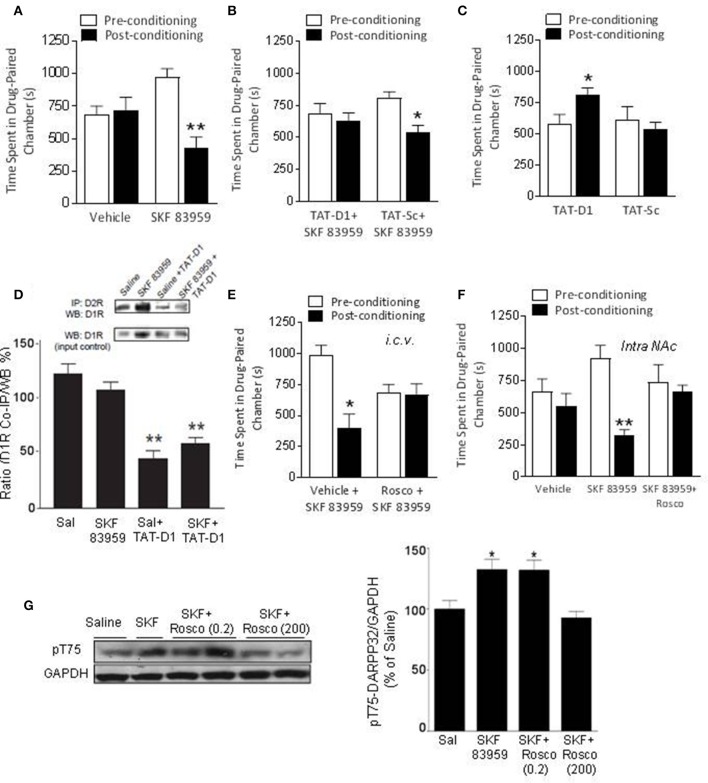Figure 2.
The effects of D1-D2 heteromer stimulation and inactivation on basal conditioned place preference. (A) Vehicle-conditioned rats did not exhibit a preference toward a particular chamber. D1-D2 heteromer stimulation by SKF 83959 (1.5 mg/kg, s.c.) induced conditioned place aversion (CPA) as the animals spent significantly less time in the drug paired chamber. (B) SKF 83959-induced CPA was abolished by pre-treatment by the D1-D2 heteromer selective disrupting peptide, TAT-D1, but not the control TAT-Sc peptide. (C) Inactivation of D1-D2 heteromer by TAT-D1 resulted in conditioned place preference (CPP) as the rats spent significantly more time in the drug paired chamber, not observed with the control TAT-Sc. (D) Representative western blots (inset) and histogram showing the amount of D1R co-immunoprecipitated with D2R from the NAc of rats treated with saline or SKF 83959. Pretreatment with TAT-D1 led to decreased co-immunoprecipitated receptors. An aliquot of each sample was used as a control for WB (input control). (E,F) The CPA induced by D1-D2 heteromer stimulation was abolished by Cdk5 inhibitor roscovitine pre-treatment (200 nmol, i.c.v, E) or intra-accumbal injection (30 nmol, F). (G) Representative western blot and histogram showing the density of Thr75-DARPP-32 phosphorylation (pT75) relative to GAPDH (as loading control). Data represent means ± SEM of n = 8–10 rats/group. (*p < 0.05, **p < 0.01: compared to saline).

